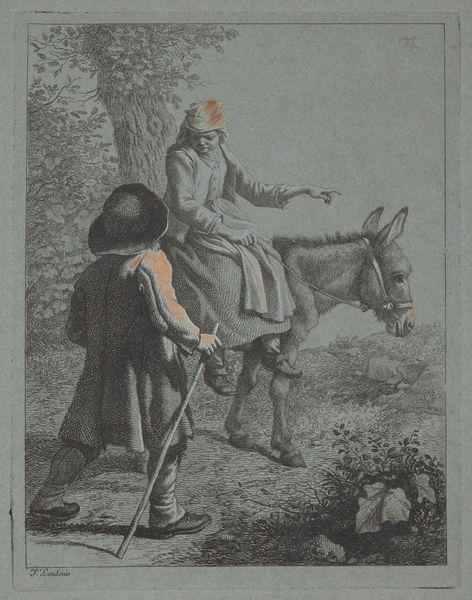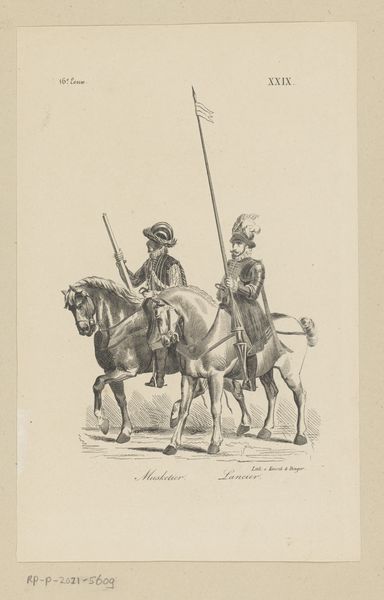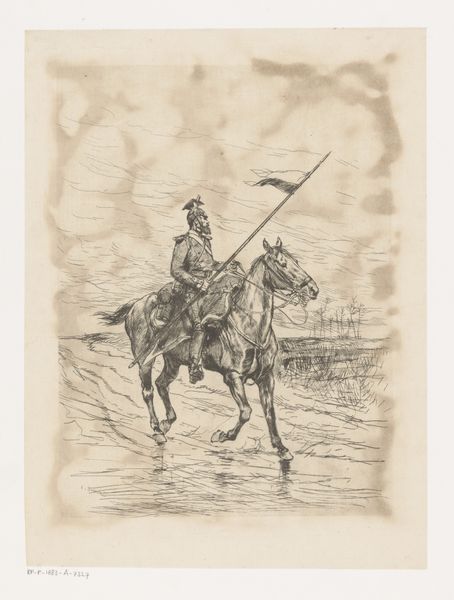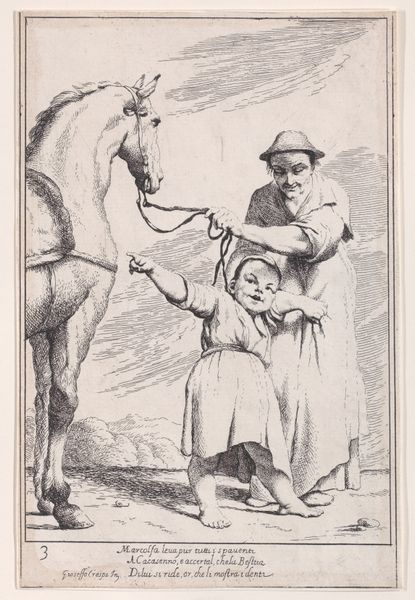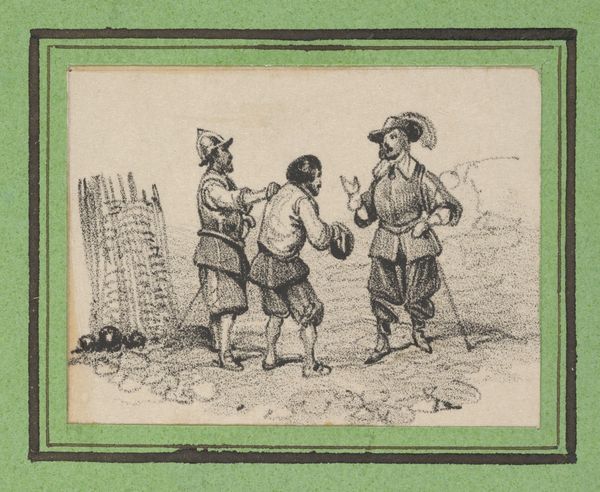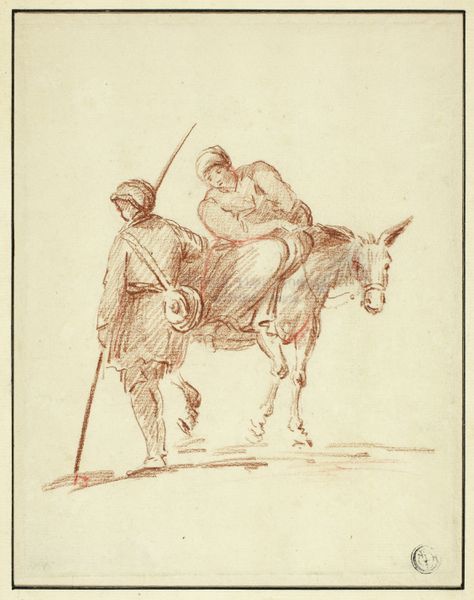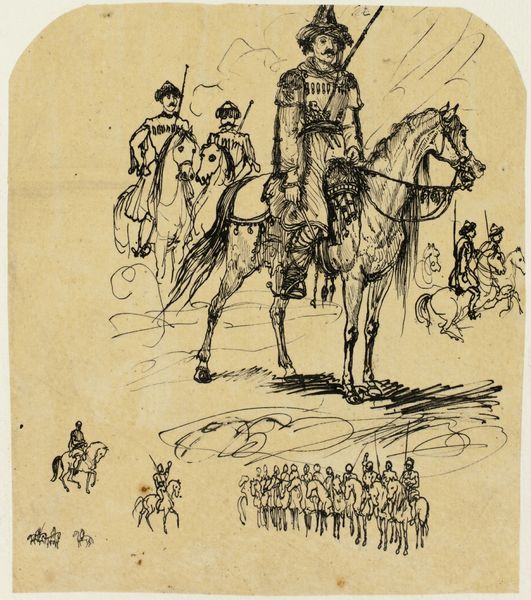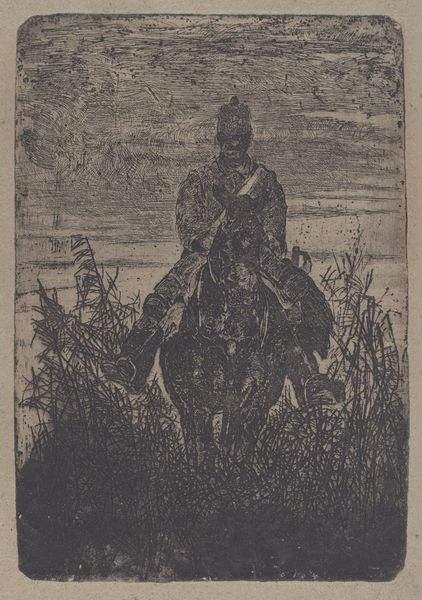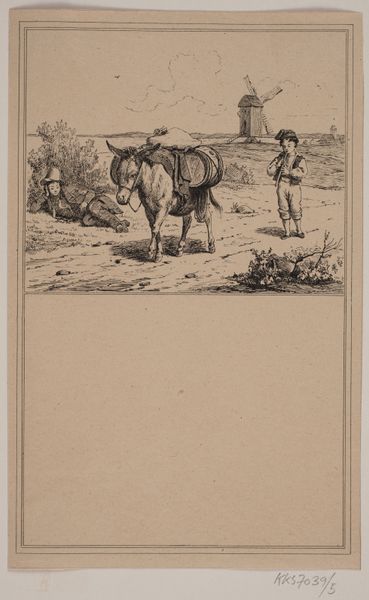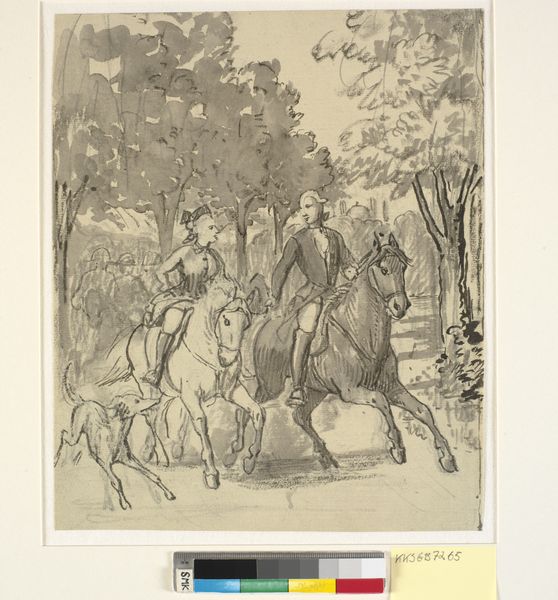
drawing, print
#
portrait
#
drawing
#
narrative-art
# print
#
figuration
#
romanticism
#
horse
#
genre-painting
Dimensions: Sheet: 2 5/16 × 1 7/8 in. (5.8 × 4.8 cm) Mount: 12 x 3 7/16 in. (30.5 x 8.8 cm)
Copyright: Public Domain
Editor: Here we have "Soldier on a horse with a woman beside him," a print and drawing by Victor Adam, sometime between 1820 and 1866. It looks like a simple encounter, very small scale. What jumps out at you? Curator: Notice the deliberate starkness. Adam's strategic deployment of hatching and cross-hatching generates visual interest through texture and tonal variation, emphasizing the volumetric forms. Consider the geometry: the horse and rider bisect the frame, counterbalanced by the architectural forms on the left. What effect does this compositional arrangement create, in your view? Editor: It makes the soldier central, almost imposing. But his face seems soft. The lines aren’t harsh, even in the shading. Curator: Precisely. This tension underscores a core dichotomy within the artistic program. Are you drawn to the relationship between figure and ground? The ground plane and figures exhibit different treatments and, through structural analysis, these formal divergences impact your engagement with the subject. Editor: I see it now – the background almost fades away, making them stand out. Curator: Exactly. Adam uses this effect, a visual stratification. The tonal gradations and precise linearity sculpt form from ground, producing a visually-constructed encounter between these individuals. Editor: So it's not just the subject matter, but how he renders it through lines and forms. Curator: Indeed. Line, form, tone: through these elements Adam orchestrates meaning. Did this structured examination alter your preliminary reading of this drawing? Editor: It really did. I see the level of control, carefully constructing this "simple" scene. Thanks! Curator: My pleasure. Paying attention to line and tone helps to reveal meaning.
Comments
No comments
Be the first to comment and join the conversation on the ultimate creative platform.
